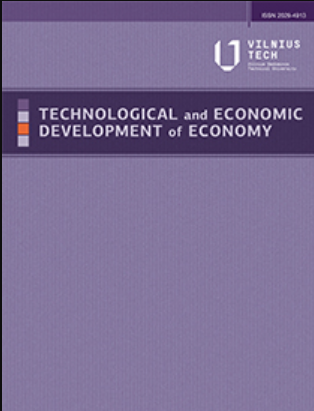衡量加入欧元区对经济增长的影响--利用聚类和安非他明分析法讲述数据故事
IF 4.8
2区 经济学
Q1 ECONOMICS
引用次数: 0
摘要
本文旨在研究一个国家加入货币联盟对其 2010 年至 2020 年期间实际 GDP 增长率以及人均 GDP 增长率等经济变量的影响。数据分析中使用了聚类方法和 ANFIS 方法。共进行了两次聚类分析。第一个聚类包括 2004 年加入欧盟并在 2010 年成为 EZ 成员的国家。第二个聚类指的是 2004 年加入欧盟但尚未成为 EZ 成员的国家。对于第一个单个群组分析,使用 ANFIS 方法分析了两个模型;对于第二个单个群组分析,使用 ANFIS 方法分析了三个模型。正如预期的那样,分析结果表明,在所观察的国家中,国内生产总值的增长与贸易、通货膨胀和固定资本投资总额有关,而人均国内生产总值与失业率、利率和公共债务有关。在国内生产总值增长方面,欧元区国家与非欧元区国家之间的差异并不显著,这与其他研究结果一致。本文章由计算机程序翻译,如有差异,请以英文原文为准。
MEASURING THE EFFECT OF ENTRY INTO THE EUROZONE ON ECONOMIC GROWTH – DATA STORYTELLING USING CLUSTERING AND ANFIS
The aim of this paper is to examine the impact of a country’s entry into the monetary union on its economic variables growth rate of real GDP as well as on GDP per capita growth for the period from 2010 to 2020. The clustering method and the ANFIS method were used in the data analysis. A total of two cluster analyses were performed. The first cluster includes countries that joined the EU in 2004 and became EZ members by 2010. The second cluster refers to those countries that joined the EU in 2004 but are not yet members of the EZ. For the first individual cluster analysis two models were analysed and for the second individual cluster three models were analysed using the ANFIS method. As expected, the results showed that GDP growth is connected with trade, inflation and gross investments in fixed capital in the observed countries, while GDP per capita is connected with unemployment, interest rates and public debt. With regard to GDP growth, the difference between countries that are in the eurozone and those that are not is not significant, which is in line with other studies.
求助全文
通过发布文献求助,成功后即可免费获取论文全文。
去求助
来源期刊
CiteScore
10.00
自引率
8.50%
发文量
66
审稿时长
15 weeks
期刊介绍:
Technological and Economic Development of Economy is a refereed journal that publishes original research and review articles and book reviews. The Journal is designed for publishing articles in the following fields of research:
systems for sustainable development,
policy on sustainable development,
legislation on sustainable development,
strategies, approaches and methods for sustainable development,
visions and scenarios for the future,
education for sustainable development,
institutional change and sustainable development,
health care and sustainable development,
alternative economic paradigms for sustainable development,
partnership in the field of sustainable development,
industry and sustainable development,
sustainable development challenges to business and management,
technological changes and sustainable development,
social aspects of sustainability,
economic dimensions of sustainability,
political dimensions of sustainability,
innovations,
life cycle design and assessment,
ethics and sustainability,
sustainable design and material selection,
assessment of environmental impact,
ecology and sustainability,
application case studies,
best practices,
decision making theory,
models of operations research,
theory and practice of operations research,
statistics,
optimization,
simulation.
All papers to be published in Technological and Economic Development of Economy are peer reviewed by two appointed experts. The Journal is published quarterly, in March, June, September and December.

 求助内容:
求助内容: 应助结果提醒方式:
应助结果提醒方式:


